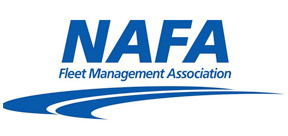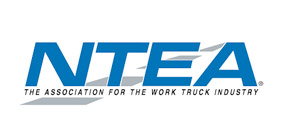Concessions help to grow profitability for parks departments

Concession stands are a potential way for city parks departments to earn some extra profit. However, much of that is determined by the location of the concessions and what is sold. Various cities have different ways of running concessions. Some have them at specific locations, such as pools and ball fields, where families spend a great deal of time. Some cities staff the stand with employees and others outsource to companies who sell food and beverage, such as food carts.
Murray, Ky.
In Murray, Ky., Mike Sykes, park director, believes concession stands are the best way for the parks department to stay above water. There are various concession stands throughout the city based in particular locations during specific sports seasons or over the summer months. These locations are the city pool, the fourplex, a baseball field and basketball court, and the soccer complex. Previously in charge of the swimming pool, he has the most experience with running that stand. The newly built stand at the soccer complex has not gotten as much use, but having just taken over the program, he plans to make sure it gets more use during the week.
Specifically, at the pool concession stand, it also acts as a good way for the lifeguards to get a break from the heat since the stand is air-conditioned. The current fourplex was recently demolished, and a new one with a new concession stand is being built in its place. The concession stand trailer near the T-ball fields will be moved over to the fourplex while it is under construction. Other concession stands, like those at the ball fields, grill hot dogs and hamburgers and also sell nachos and a variety of other snacks. Local youth are hired to run the concession stands each year, with adults overseeing the training and providing supervision. This helps young adults have a job over the summer months.
The type of food sold depends on what will be profitable. The pool’s menu includes only a small selection of items, such as hot dogs, air heads, chocolate bars and chips. A 10-minute break is taken each hour for kids to take a break from the pool, which is when they all come and get snacks. There are multiple windows for service. However, Sykes admitted, “The more options I have, the longer it takes for kids to decide what they want.”

In order to keep it simpler and the wait shorter, a limited variety of snacks is offered. Storage is available in various locations, and food can be delivered as often as necessary. Freezers inside the concession stands store frozen foods. However, since they are not climate controlled, food items, such as buns, must be purchased every day since many are needed and they cannot be stored for long periods of time.
“I always said concessions are the way to go,” Sykes said. “If you have food there cheap enough and it’s less than even going to the gas station, they’ll eat your food.”
Visitors tend to be lower-income families, and the goal is for it to be inexpensive for families and kids to keep them coming back regularly. The parks do not have a tax and do not generate money from tourism. Funding from the city and county helps to provide money for payroll. Anything extra, such as renovating fields, is paid for through program registration, weekend tournaments and concessions. The money made from concessions enables the department to not increase program registration fees for families.
Carmel, Ind.
Caramel Clay Parks and Recreation operates a single concession stand at the water park, which is also connected to the city’s community center. The water park opened in 2007 and has always had some form of concessions. The concessions and water park are open from Memorial Day through the beginning of school, which is typically in early August.
While visitors to the water park can bring in their own food and drink, the concession stand still brings in approximately $200,000 during the water park season. On the busiest days, the water park can see between 1,200 and 1,300 visitors. The concession stand must be profitable in order to run it, according to John Lampe, recreation services manager, since the department’s financing, purchasing and budget must all go through and be approved by the park board, which reports to the city administration.
Lampe hires the staff and sets the prices for the concession stand. There are a few supervisors who are typically college students. Otherwise, he hires primarily high school youth interested in a summer job. Each year, he normally hires between 30 to 35 employees. Each day, there are 15 concession stand employees working. He starts the process in December each year, reaching out to previous employees to see if they would like to return. By February, he begins the hiring process to fill the rest of the open positions. In May, staff begins training, primarily on evenings and weekends, to prepare for opening day. Everyone is required to undergo food safety training. Contractors also come throughout May to ensure the machines are in working order.
The concession stand serves anything that can be cooked in an oven, such as hot dogs, hamburgers, nachos and pretzels. It doesn’t have anything that requires the use of a deep fryer. There is a pop machine and soft-serve ice cream machine. While the stand has storage for items that day, the majority of the food is stored in the community center.
“I take inventory twice a week before ordering,” Lampe explained. “Then I look at the weather to decide whether to scale up or down.” Otherwise, it is a pretty standard order each week based on what is being sold, with deliveries on Tuesdays and Fridays.
Previously, Carmel also had a cart that would go around the water park. However, Lampe was concerned about the employee walking around in the open with that much cash on them, so now everything is operated from the concession stand. Any food that is not used at the end of the season is donated to veteran shelters or other nonprofits in the area.
Klamath Falls, Ore.
The city of Klamath Falls, Ore., recently began a concessions pilot program providing food and beverage to those visiting the parks. Jonathan Teichert, city manager, explained, “The seasonal concession program would utilize food trucks, pushcarts, kiosks, etc. There wouldn’t be the use of permanent buildings, while future construction of permanent concession areas could be considered based on program success, utilization and demand. The vendors are to typically come and go each day and operate during regular park hours.”
These concessions would involve private businesses partnering with the city to provide their food and services at the park. “The city wouldn’t be involved in food or other business equipment purchasing and storage. It would all be private per the food truck or cart. While the city wouldn’t choose what is sold or dictate menu offerings, we’d look to have diverse vendors that provide the greatest public concession options. This would mean two coffee kiosks likely wouldn’t be permitted within the same park or two hot dog carts.”
The parks chosen to host these vendors would be within the downtown area or large regional parks.
“For the introductory pilot season, we did not choose more neighborhood parks that are primarily located in residential areas for reasons related to parking, noise and trash accumulation,” Teichert described.
Unfortunately, the city did not see as much vendor interest in the program as they had hoped. As awareness of the program grows, the city believes more applications will be received. Interested vendors pay a fee of $250 each month to participate and must have a certificate of liability insurance.
“We wanted to increase public use and enjoyment of our great city park assets,” Teichert exclaimed.
The thought was, if children and other users are recreating for hours, it would be a good option for them to purchase a snack when hungry or a drink for refreshment during warm summer days. Special events are typically coordinated independently by the event organizer. Concessions would be offered between the months of June to October at six possible park locations.
After the city has had time to raise awareness, gather feedback and consult with the city’s parks advisory committee, it will be decided whether to expand, maintain or discontinue the program. Currently, the plan is to continue the pilot program in 2025 with the current framework and focus on generating more vendor interest.
Next Article: Clamping down on leakage in flat terrain, saves water and power consumption


